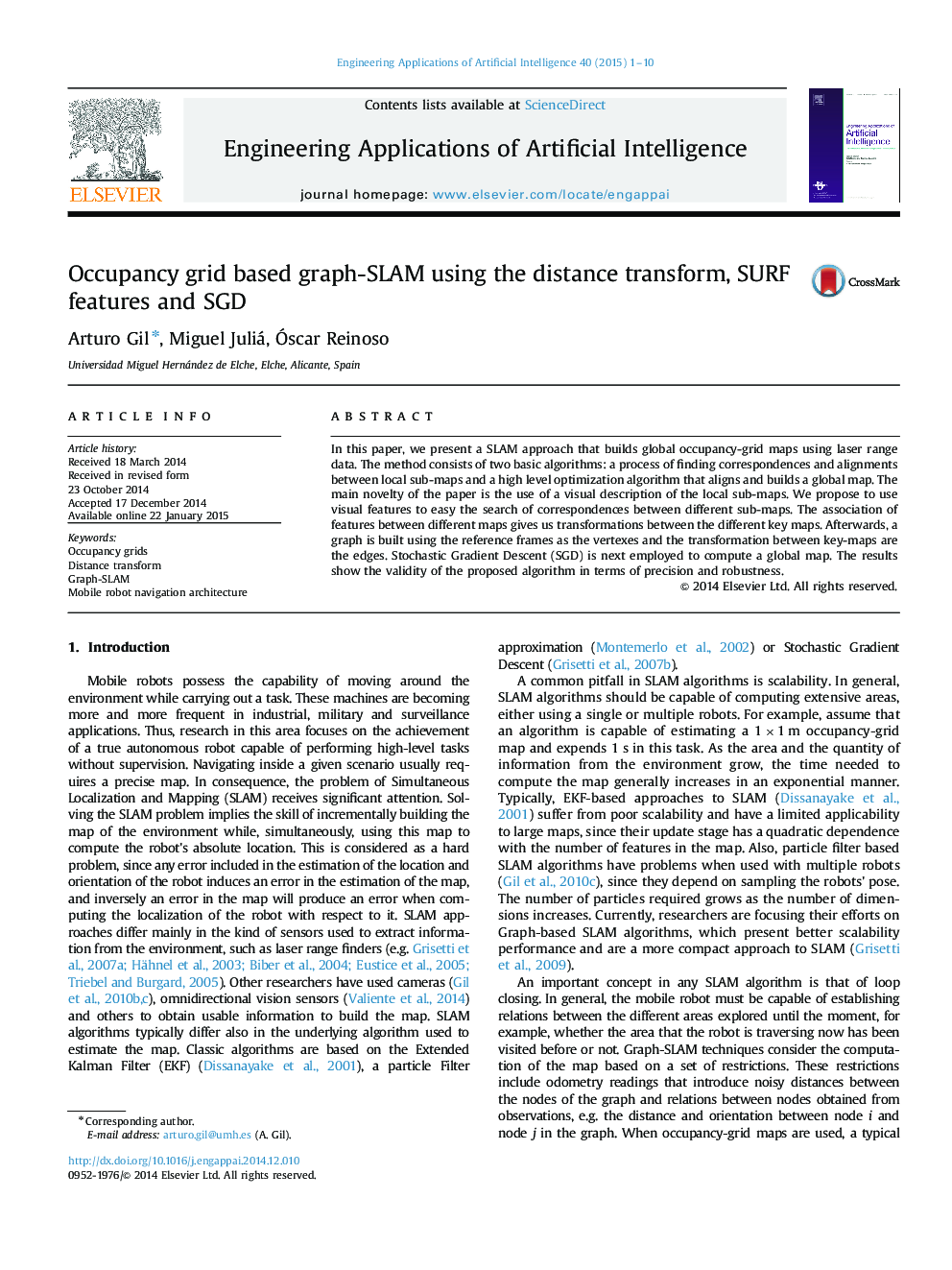| Article ID | Journal | Published Year | Pages | File Type |
|---|---|---|---|---|
| 380341 | Engineering Applications of Artificial Intelligence | 2015 | 10 Pages |
In this paper, we present a SLAM approach that builds global occupancy-grid maps using laser range data. The method consists of two basic algorithms: a process of finding correspondences and alignments between local sub-maps and a high level optimization algorithm that aligns and builds a global map. The main novelty of the paper is the use of a visual description of the local sub-maps. We propose to use visual features to easy the search of correspondences between different sub-maps. The association of features between different maps gives us transformations between the different key maps. Afterwards, a graph is built using the reference frames as the vertexes and the transformation between key-maps are the edges. Stochastic Gradient Descent (SGD) is next employed to compute a global map. The results show the validity of the proposed algorithm in terms of precision and robustness.
